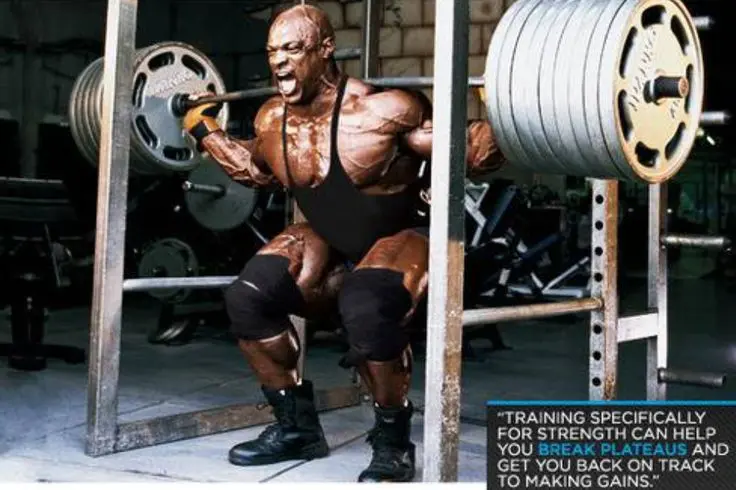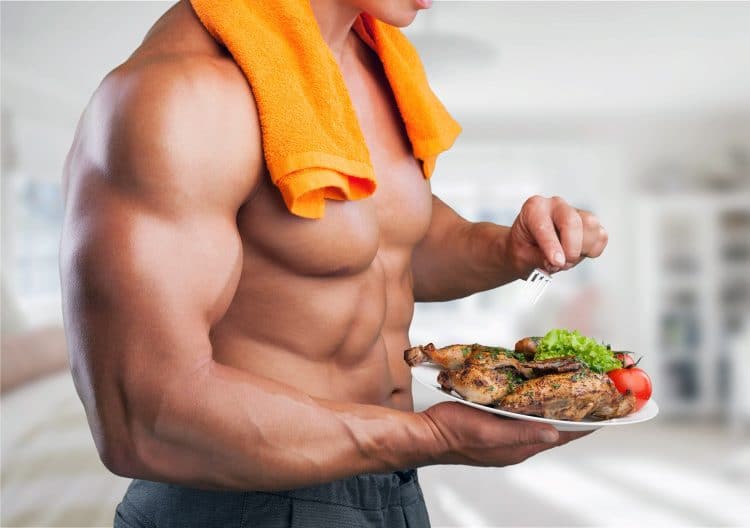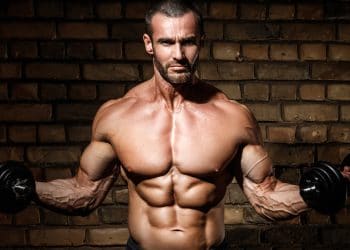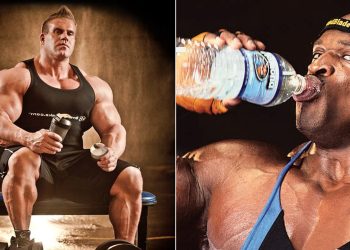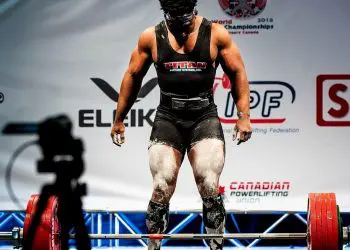While a lot of lifters want to build muscle mass and have no real interest in performance, others work out with weights because they want to get stronger. This could be for competitive powerlifting, strongman, or Olympic weightlifting, for sports such as MMA or football, or simply the thrill of seeing a barbell bend when it’s loaded with lots of 45-pound plates.
Whatever the reason, getting stronger is hugely rewarding. And, as Mark Rippetoe, ex-powerlifter and author of Starting Strength, likes to say, strong people are harder to kill!
However, building serious strength requires time, dedication, perseverance, and effort. There’s a little bravery needed, too, as lifting heavy weights often means dicing with failure.
Despite all the training information available, some people still find it hard to gain strength. They make good progress initially, as most beginners do, but then soon hit a plateau. Try as they might, they simply cannot lift any more weight.
Talk about frustrating!
There are several reasons you may be stuck in a strength gaining rut, and the good news is that the fix is usually pretty straightforward. In this article, we reveal the seven most likely reasons you aren’t getting stronger and explain what you can do to get things moving again.
Level Up Your Fitness: Join our 💪 strong community in Fitness Volt Newsletter. Get daily inspiration, expert-backed workouts, nutrition tips, the latest in strength sports, and the support you need to reach your goals. Subscribe for free!
7 Reasons You Aren’t Getting Stronger
Are you stuck in a strength rut? Has your progress hit a brick wall? These are the most likely reasons that you aren’t getting stronger. Fix these faults, and your strength levels will soar!
1. You aren’t lifting heavy enough
Bodybuilders traditionally do most of their training in the 8-12 rep range. Some like to use heavier weight and do 5-7 reps per set, and others will do 15-20 reps per set, but 8-12 is the most commonly used rep scheme.
And while 8-12 is perfect for triggering increases in hypertrophy, it’s not so good for building strength. If you can do 8-12 reps of an exercise, you are, by definition, using a relatively light weight – typically 67 to 80% of your one-repetition maximum, or 1RM for short.
If you want to get stronger, you need to lift heavy weights. That means working in the 3-5 repetition range and lifting 80-95% of your 1RM (1).
You can use lighter weights and higher reps for assistance and secondary exercises. However, most of your training should be hard and heavy.
Low rep, high weight training also involves long rest periods between sets, with 3-5 minutes being the norm. Such long rest periods mean that you’ll be able to lift heavier weights as you’ll be fully rested between sets.
Such heavy weights challenge your muscles and your nervous system, too, which is the “governor” of maximal strength. It’s not just the size of your muscles that’s important, but your ability to recruit a maximum number of muscle fibers, which is controlled by your nervous system.
However, it would be a mistake to try and “max out” every workout. That level of intensity is extremely taxing and takes a long time to recover from. For that reason, you’ll probably gain strength more quickly if you mostly use 3-5 reps per set and leave the singles and doubles for the lead up to competition, or whenever you want to test for a new 1RM.
If you want to get stronger, it’s time to put away the light weights and start lifting heavy. Instead, build your workouts around sets of 3-5 reps using 80-100% of your 1RM.
2. Your workouts aren’t progressive
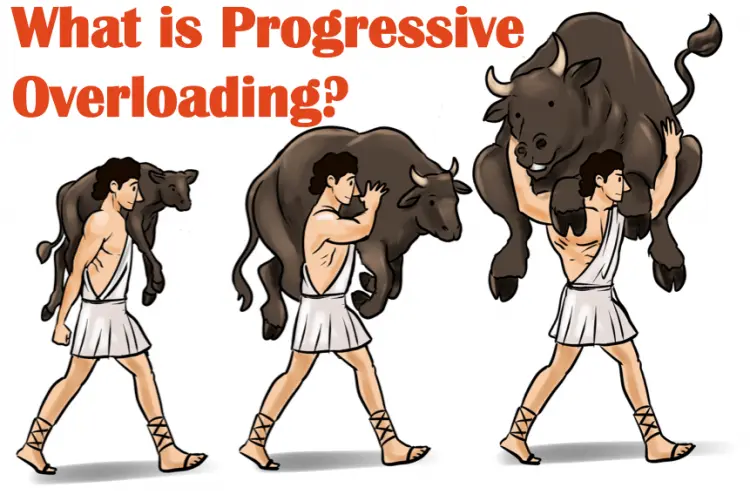
You are only as strong as your last workout, and if you want to get stronger, you need to gradually lift more weight. This is called progressive overload.
A lot of lifters are guilty of slapping the same old weight plates on the bar and doing the same number of reps each time they work out. So, it’s no wonder they aren’t getting stronger!
As the saying goes, if you always do what you’ve always done, you’ll always get what you always got. You have to force your body to get stronger by constantly challenging it to do more.
So, if you lift 220lbs today, you need to try 225llbs the next time you train. While strength increases aren’t always linear and may sometimes stall, if you want to continue getting stronger, you should always try to lift more weight.
Start keeping a training journal so you can track your progress. Use it as a reminder to increase your weights week by week. Also, consider investing in some fractional weight plates. They’re smaller than regular weight plates, weighing anywhere from a quarter to one pound each. Using them allows you to make very small increases.
The key to getting stronger is gradually lifting more weight. However, take care never to increase weight at the expense of good form. Your form should remain constant, regardless of how much you are lifting. Poor form increases your risk of injury.
3. You are a program butterfly
While workout variety can be helpful for shocking your muscles into growth, flitting from one program to another could be one of the reasons you aren’t getting stronger.
The best strength-building programs are pretty basic and revolve around a small handful of core exercises, such as the squat, deadlift, bench press, and overhead press. Over a period of 8-12 weeks, you gradually increase your weights to reach a new level of strength. This is called progressive overload.
Changing programs before you’ve reaped the benefits of your chosen workout means you’ll never reach your true strength potential. Just as you’re starting to gain momentum, you change direction and go back to zero.
So, pick a good quality strength program, such as nSuns 531 LP, Wendler’s 5/3/1, StrongLifts, Starting Strength, Westside, the Texas Method, Grey Skull, etc., and stick with it for the prescribed duration. Then, after a week’s recovery and deload, pick a new program and start over.
Pick a good program and stick with it for 8-12 weeks, or until you hit a wall and stop making progress. Alternatively, you can write your own strength program built around a small number of core compound lifts and a few well-chosen accessory exercises.
4. You are overdoing the cardio
Everyone who lifts should do cardio. Cardio is good for your heart, lungs, and circulatory system and can help lower your risk of various serious diseases, including heart attacks, strokes, and even some cancers.
That said, you can have too much of a good thing, and doing too much cardio could be the reason you aren’t getting stronger. Cardio not only uses valuable energy that could be better used lifting heavy weights and recovering between workouts, but it may also lower testosterone and raise cortisol levels if you do too much (2).
Note, we said overdoing it, meaning hours of running, cycling, rowing, etc., per week. That’s what’s called chronic cardio!
However, 2-3 20 to 30-minute cardio sessions per week will not have much of an impact on your strength gains and could even make your workouts more productive. For example, you may find that you can recover quicker between sets and workouts if you have above-average cardiovascular fitness.
If you still want to do cardio but also want to make your conditioning workouts more effective, consider doing HIIT (high-intensity interval training) rather than LISS (low-intensity steady state) training.
Level Up Your Fitness: Join our 💪 strong community in Fitness Volt Newsletter. Get daily inspiration, expert-backed workouts, nutrition tips, the latest in strength sports, and the support you need to reach your goals. Subscribe for free!
HIIT workouts are generally shorter than LISS workouts. They can also be adapted to mirror the demands of your strength workouts, making you a better-conditioned lifter.
For example, instead of plodding along at the same slow pace for 40 minutes, you could do air-bike or rower 20-second sprints with 40 seconds recovery for 10 sets. Tack on a five-minute warm-up and cool-down, and you’ve got the perfect 20-minute cardio workout for lifters.
Another beneficial form of cardio that won’t hurt your strength is walking. Simply going for a stroll provides your heart and lungs with a gentle workout, helps flush your muscles with freshly oxygenated blood, lowers cortisol, and enhances recovery between workouts. Anywhere between 7,000 to 10,000 steps (40-60 minutes) per day will have a significant impact on your fitness and health (3).
So, by all means, include some cardio in your training schedule, but don’t try and train like a powerlifter AND a marathon runner at the same time. These goals are at opposite ends of the fitness scale. Instead, put most of your energy into heavy lifting, and do just enough cardio to improve and then maintain your basic cardiovascular fitness and health.
5. You don’t have any goals
So, how strong do you actually want to be? If you don’t know, it’s not really surprising that you aren’t getting stronger. After all, with no training goals, your workouts will probably lack the direction they need to be effective. In short, you’ll be exercising instead of training, and there is a BIG difference!
Training means working out for a specific purpose or goal, and the best goals are quantifiable. It’s more than just “I want to get stronger” or “I want to lose weight.”
Instead, for a goal to mean anything, it needs a target attached to it that’s measurable and reachable.
For example, you might set yourself the goal of deadlifting 500 lbs. This is a good benchmark goal that most average lifters should be able to reach with a few years of training.
You can pursue several goals at the same time if you wish. For example, you could start working toward hitting a 300lb bench press and a 400lb squat, too. But, take care not to take on too many goals at once. It’s harder to divide your time and energy between multiple goals than it is to focus on one thing at a time.
Once you have set your goal, you can then backtrack and design or choose the workouts that will help you reach your training destination. This will include assessing your strengths and weaknesses and turning those weaknesses into strengths. It’s all very analytical!
With your goal always at the forefront of your training, every workout you complete and every meal you eat will take you one small step toward achieving it. Your strength will improve naturally, and, with enough time and consistency, you’ll eventually own that 500 lbs. deadlift.
What do you do then? Set another, bigger goal, of course! And so, the cycle begins again.
You can still get stronger without a goal, but it’ll be more of a happy accident than by design. Having goals means you’ll be much more focused on your training, and your workouts will probably be much more productive.
Not sure how strong you want to be? Take a look at these strength standards to see how you measure up and what you should be able to achieve. Don’t be afraid to have lofty goals, either. They’ll take longer to reach, and you may need to break your goals down into smaller increments. However, if need to think big if you want to achieve great things.
Training without a goal is like going on a trip and not knowing why or where you are heading. You MIGHT reach a worthwhile destination, but you are more likely to just wander around aimlessly. Set yourself some strength-related goals to give your workouts more direction and purpose. Goal setting is one of the keys to getting stronger.
6. You aren’t eating enough
Bodybuilders often say that you need to eat big to get big. And while you CAN get stronger without gaining a lot of muscle mass, it’s a whole lot easier when you eat plenty of food. After all, you need loads of energy for your workouts and to fuel recovery.
All three food groups are essential for building strength. This is not the time to cut carbs and go keto or start a new low-fat diet.
You need:
- Protein for muscle repair and growth
- Carbohydrates for energy
- Fats for anabolic hormone production and regulation
It’s beyond the scope of this article to tell you exactly what to eat to build strength. But, needless to say, your diet should be balanced and healthy and provide you with all the calories and nutrients you need to train hard and recover harder.
If you are hitting the gym regularly, getting plenty of sleep, and still aren’t getting stronger, your diet could be the reason you’ve stopped making progress. Eat big, eat healthily, and you’ll soon be back on track.
7. You’re a pro in the gym but an amateur out of it
Suppose you are following a good workout plan, training hard and consistently, and still aren’t getting stronger. In that case, you are probably making this serious and common mistake.
Even if you are an ardent exerciser, you’re probably only in the gym for 4-8 hours per week – out of a possible 168. During the time you spend away from the gym, it’s all too easy to undo many of the benefits of your workouts and bring your progress to a grinding halt.
Common out of the gym mistakes that a lot of lifters make include:
- Not getting enough sleep
- Unhealthy diet (including too many “cheat” meals)
- Not drinking enough water
- Drinking too much alcohol
- Smoking and recreational drug use
- Undermining recovery by wasting energy on non-gym related activities
- Being too sedentary between workouts
Lifting weights is only part of what you need to do to get stronger. All of these other factors are crucial too. It’s often said that “you can’t out-train a bad diet,” and it’s also safe to say you can’t out-train an unhealthy lifestyle, either.
You’ll get better results from your training if you treat getting stronger like it’s your job. Be a pro in and out the gym. Pay attention not only to your workouts but what you do the rest of the time, too. Nutrition, sleep, etc., are critical for successful strength training.
Wrapping Up
Everyone can get stronger – young, old, men, women, and beginner, intermediate, and advanced lifters. That said, there IS a genetic component to developing strength, and we’re not all physically equipped to pull a 500kg (1100lbs) deadlift like strongmen Eddie Hall and Hafthor Bjornsson.
But, with time, effort, dedication, and determination, most people can develop strength far beyond what is considered average. Getting stronger is your body’s natural defense against hard work. Train intensely enough, and you WILL get stronger.
However, there are several things you can do that will undermine your progress and could stop you from reaching your full strength potential.
So, if you are stuck in a strength rut, use the information in this article to identify and fix whatever is holding you back.
References:
1 – Frontiers in Physiology: Greater Neural Adaptations following High- vs. Low-Load Resistance Training https://www.frontiersin.org/articles/10.3389/fphys.2017.00331/full
2 – PubMed: Effect of Concurrent Strength and Endurance Training on Skeletal Muscle Properties and Hormone Concentrations in Humans https://pubmed.ncbi.nlm.nih.gov/10751104/
3 – PubMed: Steps per Day and All-Cause Mortality in Middle-aged Adults in the Coronary Artery Risk Development in Young Adults Study https://pubmed.ncbi.nlm.nih.gov/34477847/

